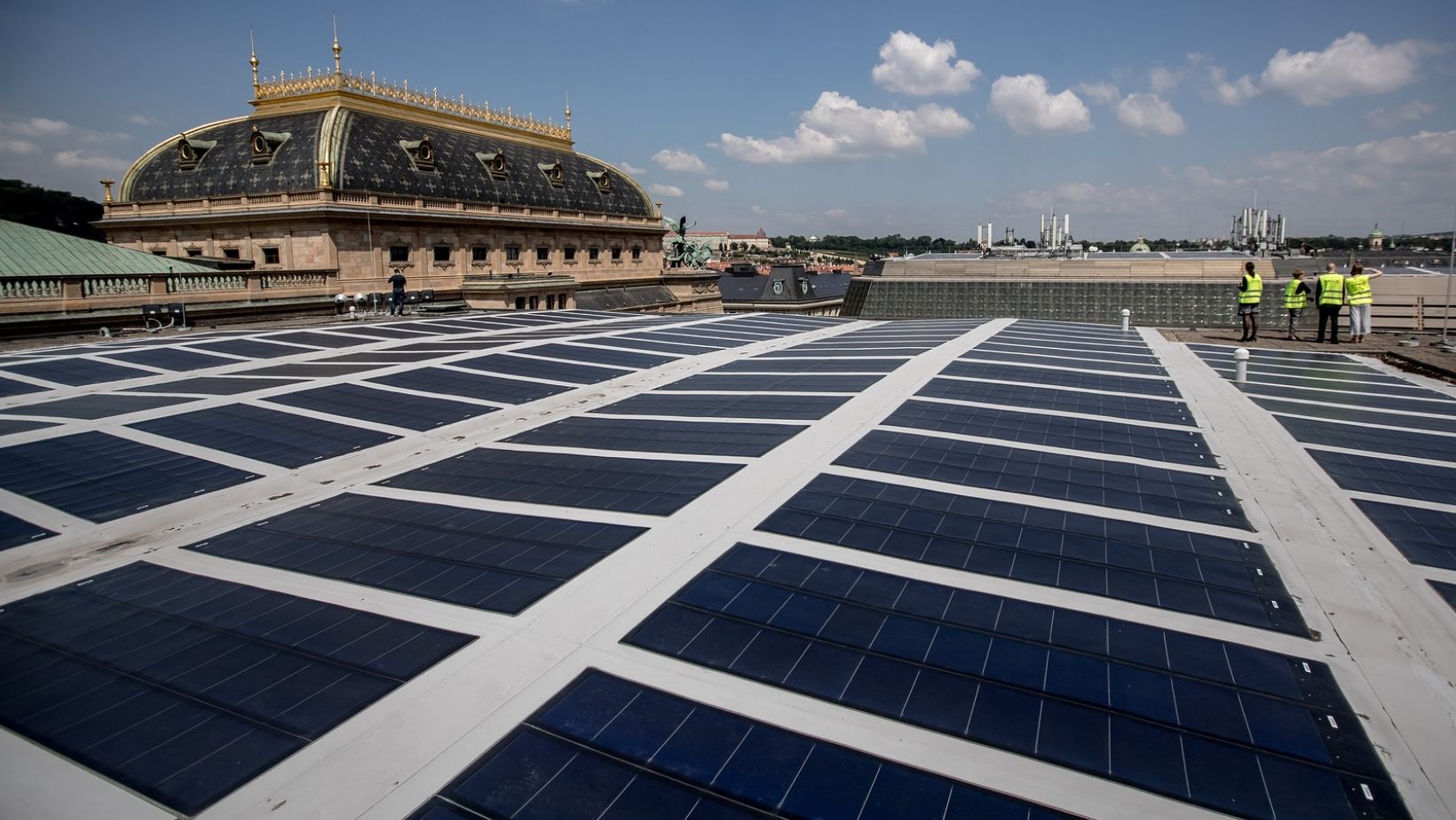In a mission to fight the sharp rise in energy prices and strengthen Prague’s energy self-sufficiency, there are new plans in place for the municipality to help with the installation of solar panels and subsidies in the capital.
According to the approved climate strategy, the city’s goal is to install panels on 20,000 Prague buildings by 2030 and gain hundreds of megawatts of power- which will be made possible through the introduction of new initiatives.
Soon, a new city company called the Prague Renewable Energy Community (PSOE) will be offering a subsidy for the installation of a solar panel on their roof, and another city company – Technology of the Capital City of Prague (THMP) – will also help with the installation under advantageous conditions.
Residents in Prague can start applying from 1 December.
“In the case of private individuals, they will use the Green Savings grant program, and public organizations will then be able to use money from the newly established Modernization Fund,” explained the director of the newly established organization, Jaroslav Klusák.
The Prague City Council has also announced the creation of a new organization for renewable energy already in its climate commitments, which should help significantly reduce CO2 emissions by 2030.
The sharp rise in Prague energy prices has accelerated these steps as it continues to grow rapidly and in an unpredictable manner.
“The solution is to switch to renewable sources and thus increase the energy self-sufficiency of Prague households,” explained Petr Hlubuček (STAN), Deputy Mayor of the City of Prague.
It will be possible to join the Prague Renewable Energy Community in the following four ways, according to the website.
“The first is intended for owners and residents of flats or apartment buildings in the territory of Prague who are interested in installing a rooftop photovoltaic power plant (PV) to use it primarily to supply electricity to those households in the house who show interest without carry out the merging of consumption points in the house.
Owners of family houses who already have a solar power plant or want to buy one soon and are not satisfied with the conditions of purchasing electricity that they do not consume themselves will also be able to participate.
The third group of possible participants are those who cannot have photovoltaics in their house but are interested in becoming a co-investor in its construction elsewhere and a consumer of energy produced from it.”
The fourth method of connection is then intended exclusively for administrators of urban buildings.
According to Hlubuček, Prague is also planning to build photovoltaic plants on the roofs of city buildings – about a hundred of them should be built by next year.
“City buildings will of course be involved in the project, but the goal is to involve as many Praguers and private entities as possible,” he concluded.
Support Prague Morning!
We are proud to provide our readers from around the world with independent, and unbiased news for free.
Our dedicated team supports the local community, foreign residents and visitors of all nationalities through our website, social media and newsletter.
We appreciate that not everyone can afford to pay for our services but if you are able to, we ask you to support Prague Morning by making a contribution – no matter how small 🙂 .





